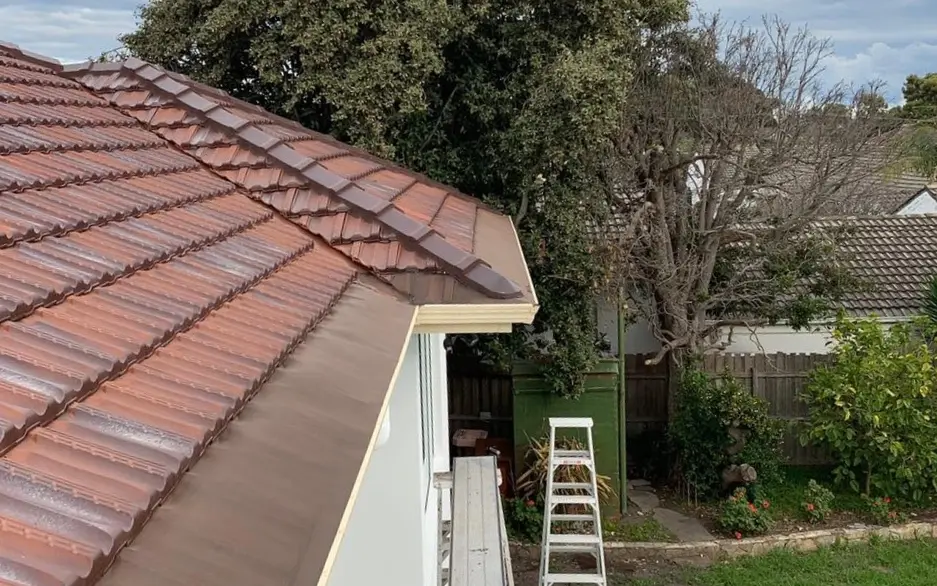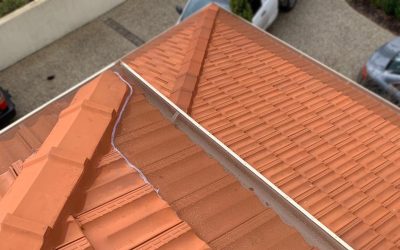Have you ever wondered what could happen if you neglect your gutters?
Let’s Picture this: A heavy rainstorm hits, and instead of smoothly draining away, water overflows, cascading down your walls, seeping into your foundation, and wreaking havoc on your home’s structure.
Such scenario is all too common for homeowners who overlook the importance of gutter maintenance. Keeping your gutters in top shape is not just about avoiding the hassle of clogs; it’s about protecting your biggest investment—your home.
In this article, we’ll dive into the seven best practices for maintaining your gutters and why gutter protection is essential for every Australian household. So, let’s start with understanding its importance:
Importance of Gutter Guards
- Prevents Water Damage
Gutter protection is vital for preventing water damage to your home. Clogged gutters can cause water to overflow, leading to damage to your roof, walls, and foundation. Properly functioning gutters direct water away from your home, preventing these issues. - Reduces Maintenance
With gutter protection in place, the amount of debris entering your gutters is significantly reduced. This means less frequent cleaning and lower maintenance costs over time. Gutter guards can help keep pests, such as rodents and insects, from nesting in your gutters. - Extends Gutter Lifespan
By reducing the amount of debris and preventing clogs, gutter protection extends the lifespan of your gutters. It helps maintain proper water flow, preventing the gutters from becoming weighed down and sagging or detaching from the house. - Enhances Home Value
Homes with well-maintained and protected gutters are more attractive to potential buyers. Gutter protection systems can be a selling point, as they indicate that the homeowner has taken steps to preserve the property’s condition.
Here are 7 Best Practices for Maintaining Gutters
1. Regular Cleaning
Regular cleaning is the most fundamental practice for maintaining gutters. Debris like leaves, twigs, and dirt can accumulate in your gutters, causing blockages. These blockages prevent water from flowing correctly, leading to overflow and potential damage to your home’s structure.
How to Clean Gutters: You should clean your gutters at least twice a year, ideally in the spring and autumn. Use a sturdy ladder to reach your gutters and remove debris by hand or with a small scoop. After removing the larger debris, flush the gutters with a garden hose to clear out any remaining dirt and check for proper water flow.
2. Inspect for Damage
Regular inspections help you identify and address minor issues before they become significant problems. Look for signs of damage such as cracks, holes, rust, or sagging gutters. Inspect the brackets and fasteners to ensure they are secure and not causing the gutters to pull away from the house.
When to Inspect: Inspect your gutters during your cleaning routine and after severe weather events. High winds, heavy rain, and storms can cause damage that needs immediate attention.
3. Install Gutter Protection
Gutter protection systems, such as gutter covers or guards, are essential for reducing the amount of debris that enters your gutters. They can significantly reduce maintenance requirements and prevent clogs that can lead to water damage.
Types of Gutter Protection: There are various types of gutter protection available, including gutter guard mesh, reverse curve guards, and foam inserts. Choose a type that suits your needs and is compatible with your existing gutter system. Professional installation ensures optimal performance and durability.
4. Ensure Proper Slope
Gutters need to be correctly sloped to ensure water flows toward the downspouts. An improper slope can cause water to pool in the gutters, leading to overflow and damage.
How to Check Slope: To check the slope, use a level and measure the angle of your gutters. The general rule is a slope of 1/4 inch for every 10 feet of gutter. Adjust the hangers if necessary to correct the slope. Or we suggest to take professional help to ensure everything is done correctly.
5. Check Downspouts
Downspouts play a crucial role in directing water away from your home’s foundation. Ensure they are clear of obstructions and securely attached. Use a hose to test the water flow and confirm that water is being effectively diverted away from the house.
Downspout Extensions: Consider installing downspout extensions if water is pooling near your foundation. Extensions help carry water further away, protecting your home’s foundation and preventing water damage.
6. Trim Surrounding Trees
Trees are a significant source of gutter debris. Trimming back branches that overhang your roof can reduce the number of leaves and twigs that fall into your gutters. Regular pruning also minimizes the risk of branches breaking off during storms and causing damage to your roof and gutters.
When to Trim Trees: Trim your trees at least once a year, preferably in late winter or early spring before new growth begins. This practice not only helps keep your gutters clear but also promotes healthy tree growth.
7. Professional Maintenance
While regular DIY maintenance is crucial, professional inspections and cleanings can provide a more thorough assessment of your gutter system’s condition. Professionals can spot issues that might be missed during routine maintenance and offer solutions to prevent future problems.
Frequency of Professional Maintenance: Consider scheduling a professional gutter maintenance service at least once a year. This service can be especially beneficial if you live in an area with many trees or experience frequent severe weather.
Our Verdict
So, there you have it!
Maintaining your gutters is essential for protecting your home from water damage and ensuring the longevity of your roof, walls, and foundation. By cleaning regularly, inspecting for damage, ensuring the proper slope, and installing gutter protection, you can keep your gutters in top shape.
Remember, a little effort now can save you a lot of trouble and expense down the road. Invest in quality gutter protection, stay vigilant with maintenance, and your home will thank you for it.
Happy guttering!
FAQs
1: How often should I clean my gutters if I have gutter protection installed?
2: What type of gutter protection is best for areas with heavy rainfall?
3: Can I install gutter protection myself, or should I hire a professional?
4: What are the signs that my gutters need to be replaced?
Social Share:
Related Posts
Gutter Protection for Australian Homes Facing Bushfire and Heavy Rain Challenges
Australia’s weather is nothing short of dramatic. From bushfire seasons that threaten homes…
Why the Best Gutter Protection Matters for Australian Homeowners?
Your gutters play a critical role in protecting your home from water damage. But without proper…
How Proper Gutter Maintenance Improves the Roof Life of Your Home?
In Australia, where the weather can be unpredictable, your roof is constantly exposed to…





